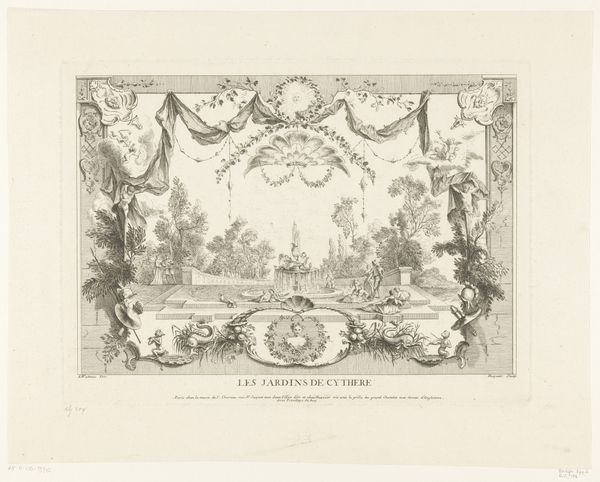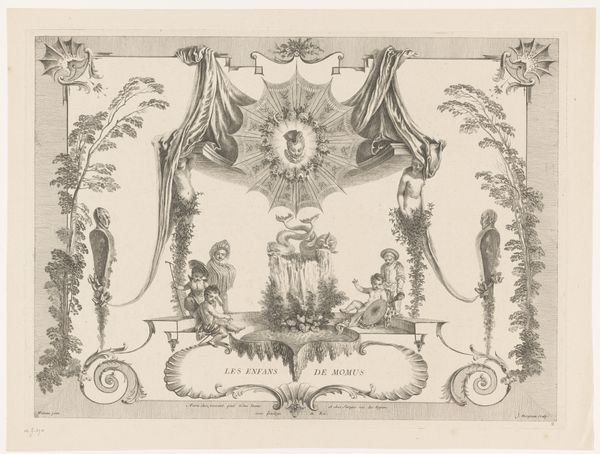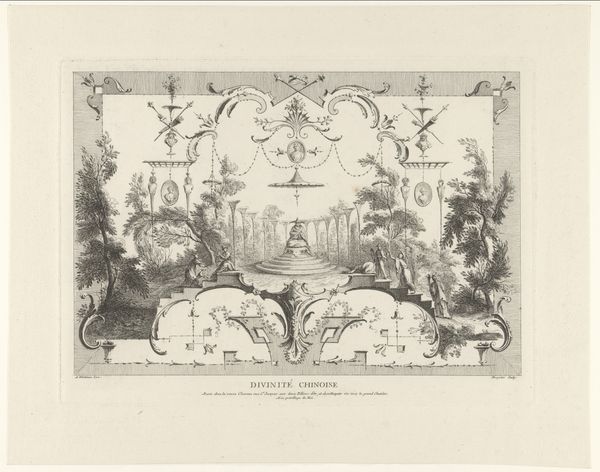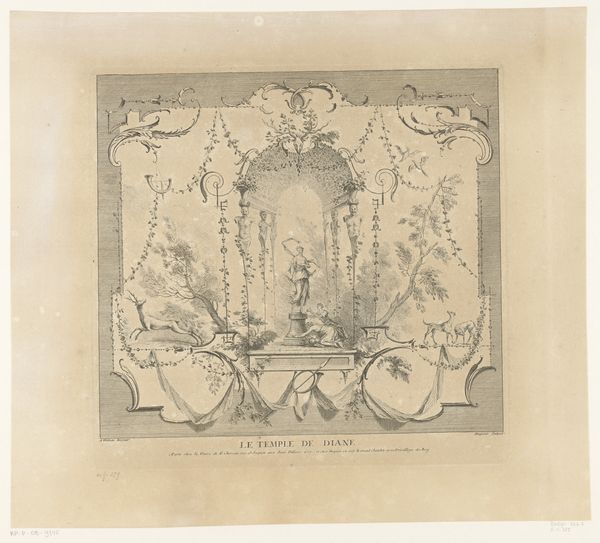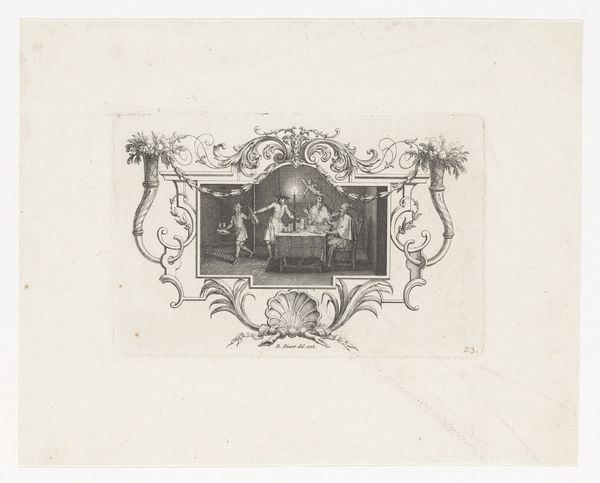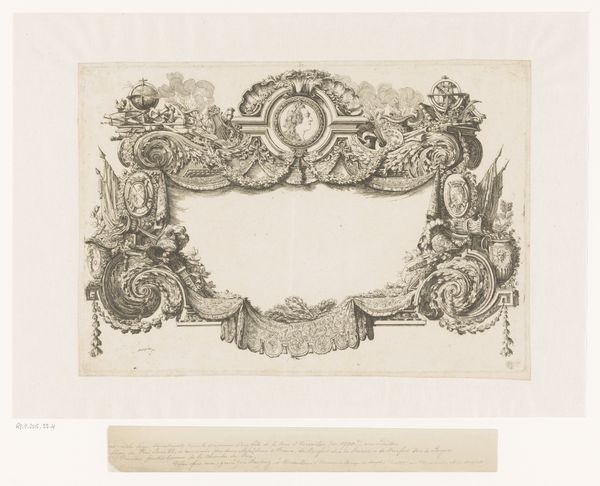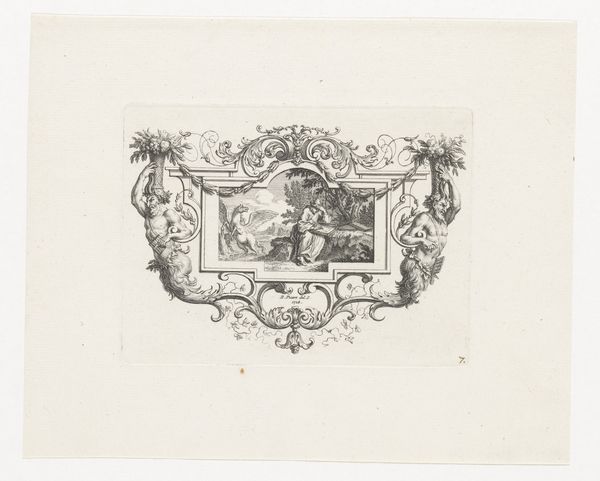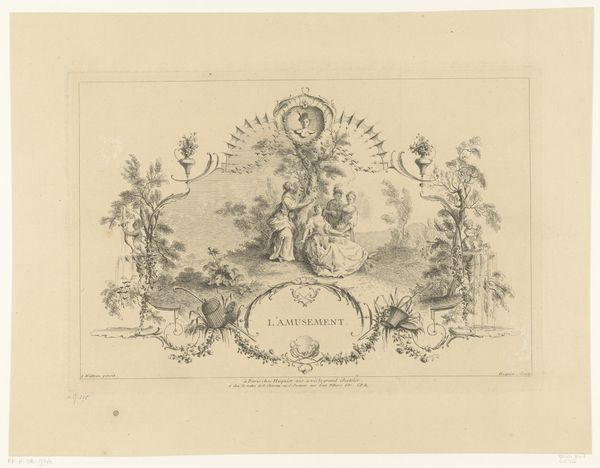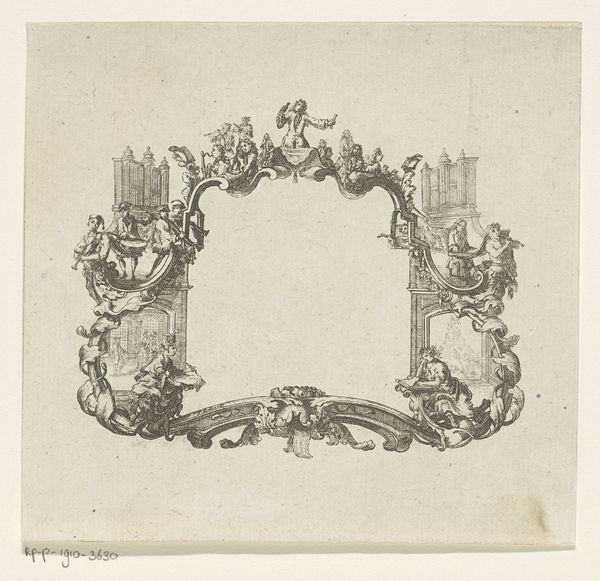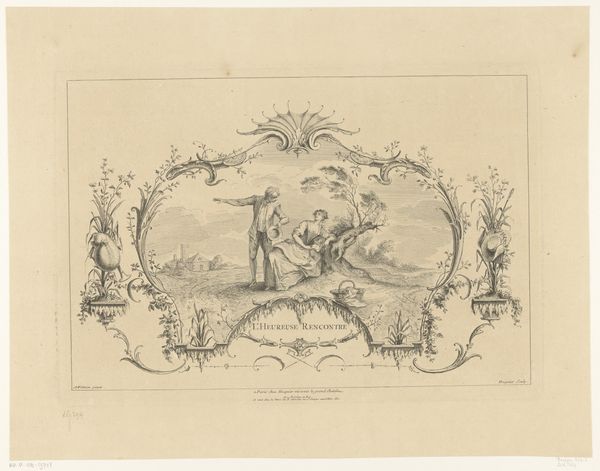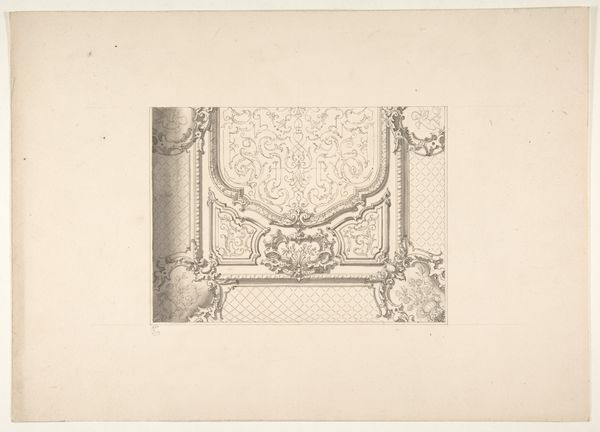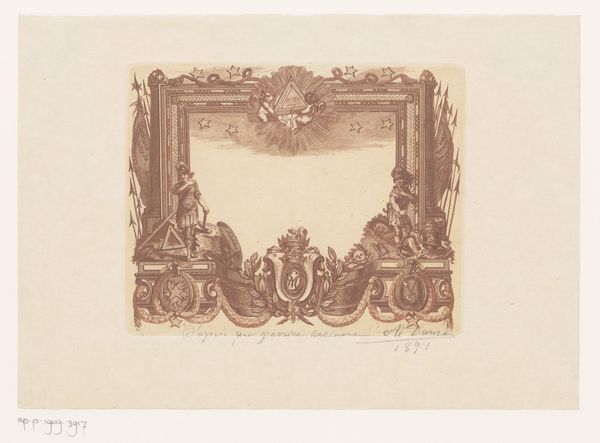
drawing, print, ink, engraving
#
drawing
#
garden
#
pen drawing
# print
#
pen illustration
#
pen sketch
#
old engraving style
#
landscape
#
personal sketchbook
#
ink
#
ink drawing experimentation
#
pen-ink sketch
#
pen work
#
sketchbook drawing
#
decorative-art
#
sketchbook art
#
engraving
#
rococo
Dimensions: height 287 mm, width 397 mm
Copyright: Rijks Museum: Open Domain
This print of Bacchus's garden was made by Gabriel Huquier around the 18th century. In it, we see visual symbols of classical antiquity. The most prominent is Bacchus, or Dionysus, god of wine, fertility, theatre, and religious ecstasy. Notice how Huquier employs the image of the seashell, a symbol linked to birth, good fortune, and pilgrimage. As the attribute of Venus, the shell evokes life and pleasure. This motif echoes through time, as it was seen in Botticelli's "Birth of Venus." This iconography continues to emerge throughout history, evolving into the religious symbol of the scallop shell. The enduring appeal of the shell reflects a deep, collective memory. The image of the shell stirs subconscious associations with sensuality and transformation. This cyclical progression shows how symbols resurface, evolve, and gain new meanings across eras.
Comments
No comments
Be the first to comment and join the conversation on the ultimate creative platform.
